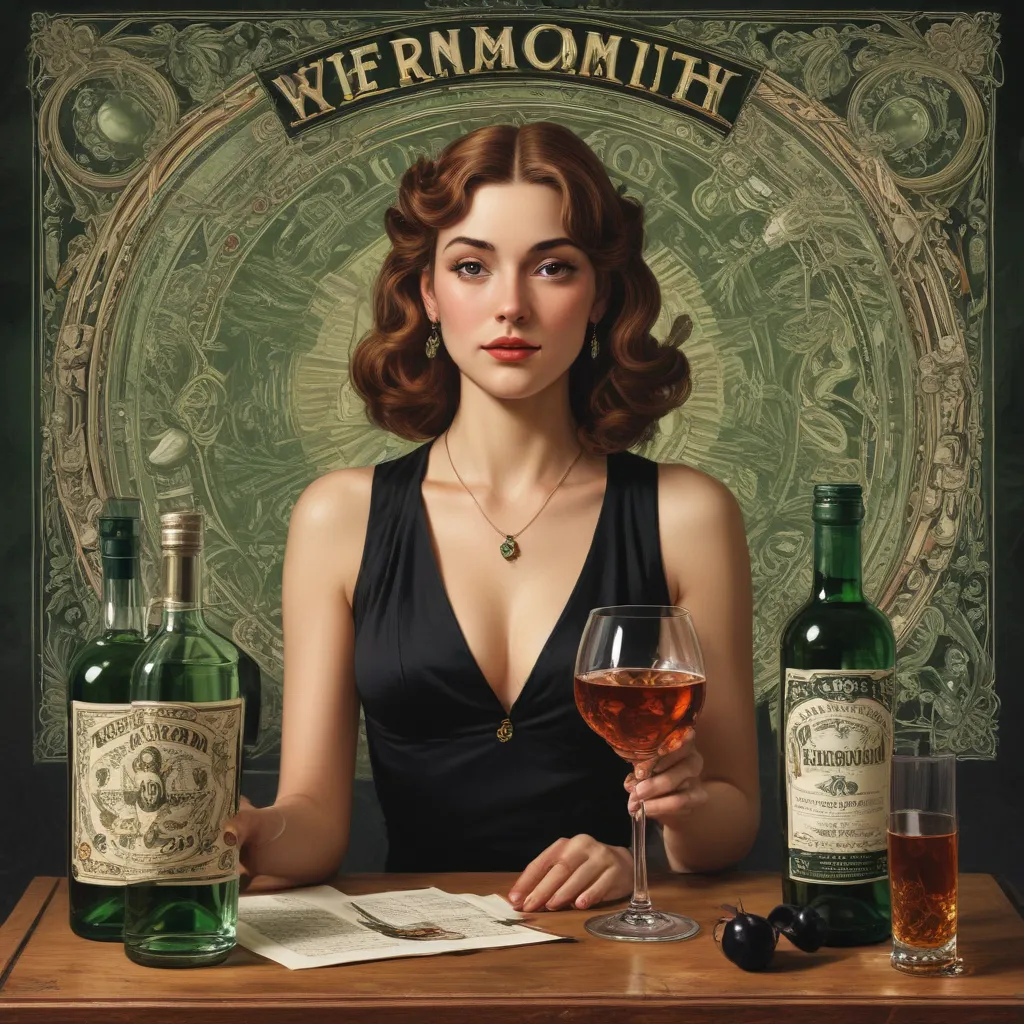
The Enchantment of Vermouth
As I step through the doors of Camperdown Elm, the vibrant heart of Brooklyn’s culinary scene, I am immediately captivated by the alluring aroma that fills the air. It’s a scent that transports me to a world of botanical enchantment, a symphony of flavors that dance across my senses. This, my friends, is the realm of vermouth – a potent elixir that has long been the darling of bartenders and enthusiasts alike.
But what, exactly, is the allure of this mysterious libation? Why has vermouth become the darling of the cocktail renaissance, sparking a renewed fascination among those who seek to unveil its secrets? Well, my friends, let me take you on a journey through the art and alchemy of this captivating spirit.
The Origins of Vermouth
Let us begin by delving into the rich history of vermouth, a tale that stretches back centuries. The origins of this fortified wine can be traced to the ancient Greeks and Romans, who infused their wines with an array of herbs, spices, and botanicals, believing in their medicinal and restorative properties.
However, it was the 18th-century apothecaries of Europe who truly elevated vermouth to an art form. These self-proclaimed “alchemists of the vine” experimented tirelessly, blending a dizzying array of botanicals to create complex, aromatic concoctions that captivated the palates of aristocrats and commoners alike.
One such pioneer was Antonio Benedetto Carpano, a Torino-based businessman who, in 1786, unveiled his eponymous vermouth – a creation that would go on to inspire countless imitators and become the cornerstone of some of the world’s most iconic cocktails.
Exploring the Flavors of Vermouth
But what, you ask, makes vermouth so alluring? The answer, my friends, lies in its unparalleled complexity. Unlike its more straightforward cousin, the wine, vermouth is a true symphony of flavors – a harmonious blend of sweet and bitter, herbal and aromatic, that dances across the palate.
At the heart of this alchemy lies the humble wormwood, the botanical that lends vermouth its distinctive bitterness and the origin of its very name (the French “vermeil” means “wormwood”). Yet, wormwood is but one player in this intricate ensemble, with a supporting cast of ingredients that can include anything from citrus peels and juniper berries to cinnamon, chamomile, and even vanilla.
The result is a spirit that is at once familiar and enigmatic, a flavor profile that can range from the bold and assertive to the delicate and nuanced, depending on the whims of the vermouth maker.
Crafting the Perfect Vermouth
Ah, but the true art of vermouth lies not just in its flavors, but in the meticulous process of its creation. For these modern-day alchemists, the journey from grape to glass is a study in patience, precision, and a deep understanding of the interplay of ingredients.
It begins, of course, with the careful selection of the base wine – a task that requires a keen palate and a deep knowledge of viticulture. From there, the vermouth maker must meticulously balance the addition of fortifying spirits, sweeteners, and a myriad of botanicals, each with its own unique character and contribution to the final blend.
And let us not forget the crucial role of time and temperature in this alchemical process. For it is the slow, deliberate aging of the vermouth, often in oak casks, that allows the flavors to meld and mellow, creating a depth and complexity that simply cannot be rushed.
The Versatility of Vermouth
But the true magic of vermouth, my friends, lies in its sheer versatility. This enchanting elixir is not merely a standalone sipping spirit, but a true chameleon of the cocktail world – a supporting player that can elevate and transform the most humble of libations.
Consider, for instance, the timeless Martini – a drink that has been the subject of endless debate and experimentation. Yet it is the addition of vermouth that brings balance and complexity to this classic, transforming the gin’s bold botanicals into a harmonious symphony of flavors.
Or take the humble Manhattan, a drink that has undergone countless iterations and interpretations. Yet at its core, it is the interplay of rye whiskey and vermouth that gives this cocktail its enduring allure, with the latter’s herbal and bittersweet notes providing the perfect counterpoint to the spirit’s robust character.
Indeed, the versatility of vermouth knows no bounds. From the delicate, floral-tinged Negroni to the bold and assertive Boulevardier, this captivating spirit has the power to both elevate and transform, adding depth and complexity to even the most well-trodden of cocktail recipes.
Discovering the Joy of Vermouth
And so, my friends, I invite you to embark on your own journey of vermouth discovery. Step through the doors of Camperdown Elm, a Brooklyn sanctuary that celebrates the art and alchemy of this enchanting spirit, and let your senses be transported to a world of botanical bliss.
Sit back, relax, and allow the bartenders to guide you through an exploration of the vermouth’s many facets – from the bold and assertive to the delicate and nuanced. Savor the interplay of flavors, the harmonious dance of botanicals, and the sheer delight that comes from uncovering the mysteries of this captivating libation.
For in the end, the true joy of vermouth lies not just in its flavors, but in the stories it has to tell – the tales of generations of artisans and alchemists who have dedicated their lives to the pursuit of perfection. So, raise a glass to the enchantment of vermouth, and let its spell cast its magic upon you.
